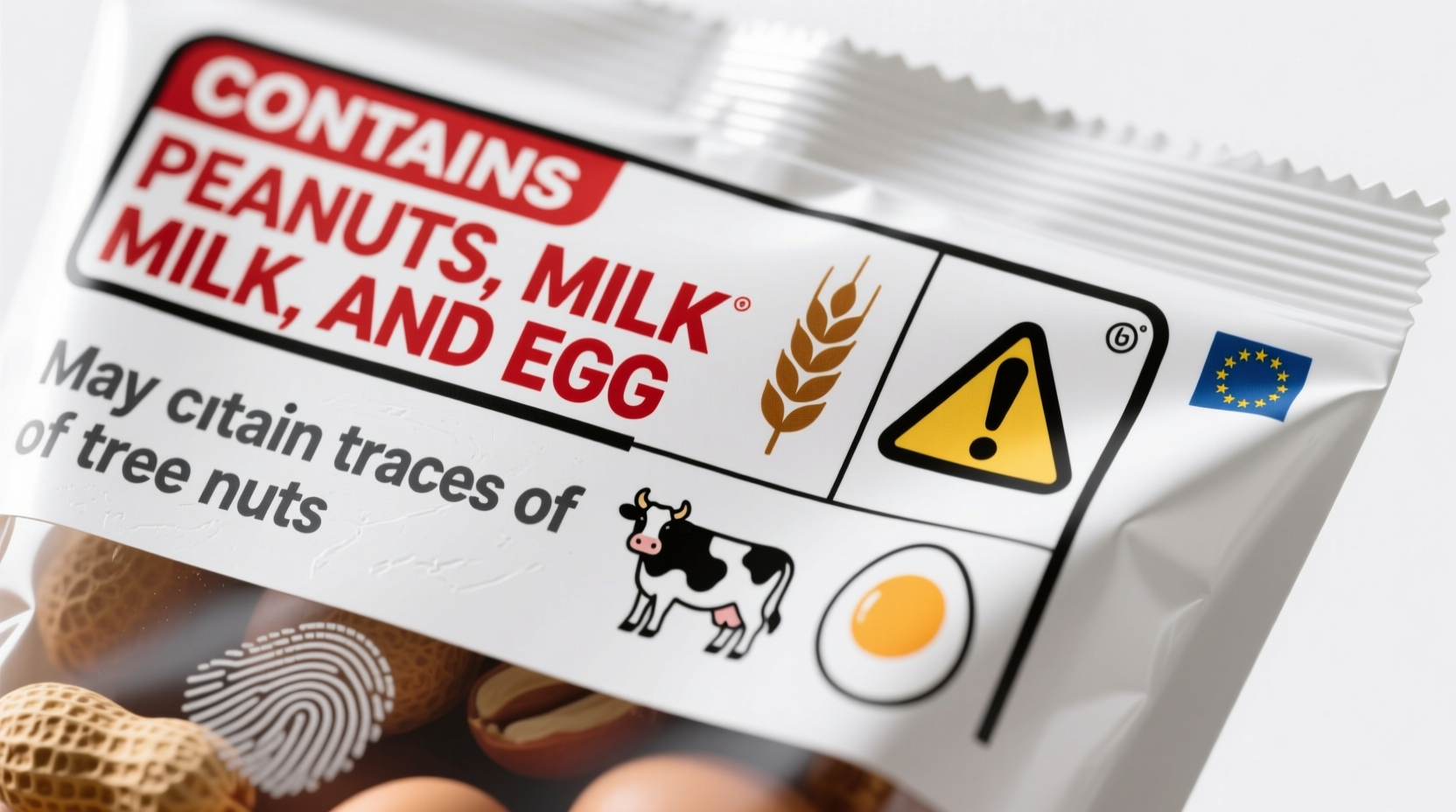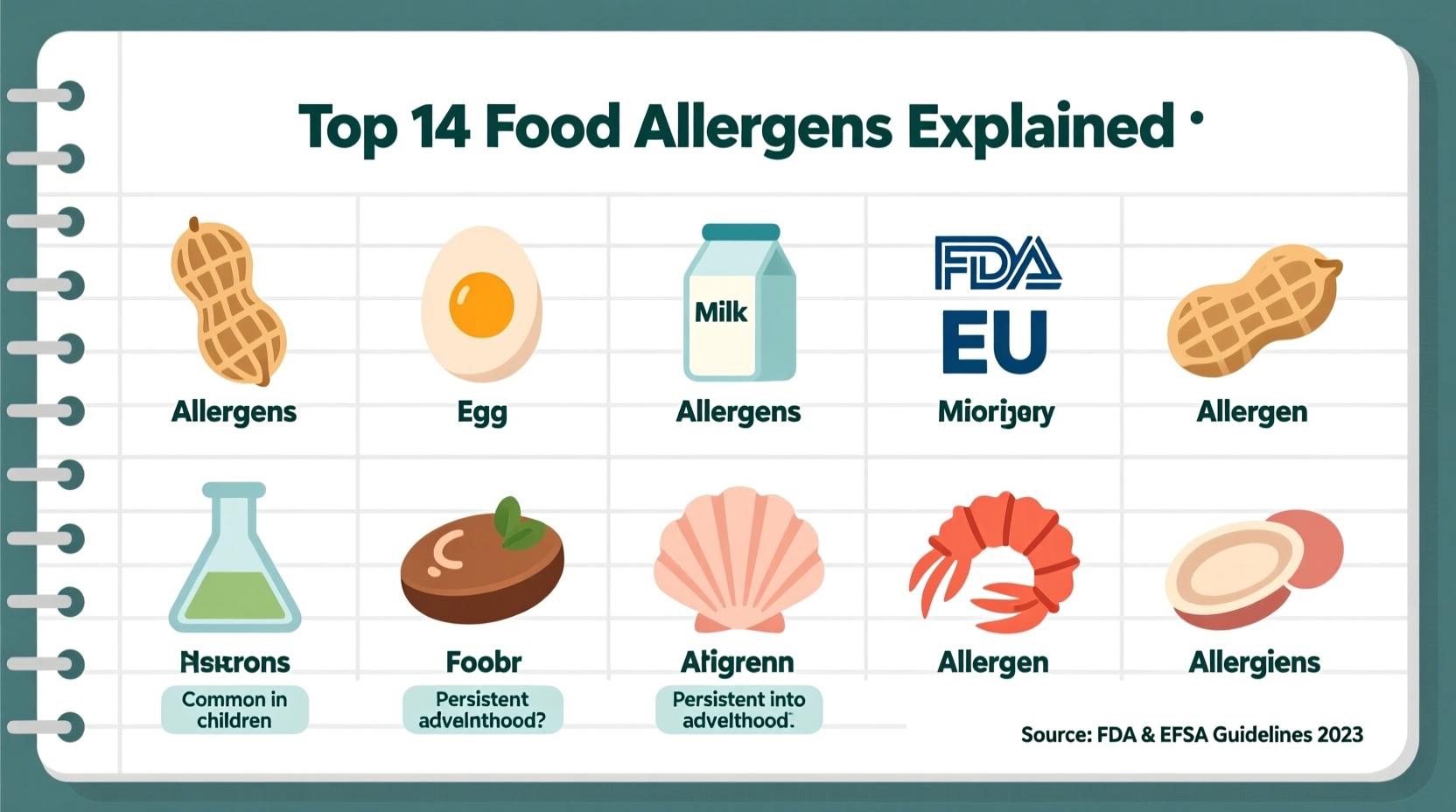Discover exactly how many food allergens impact consumers globally and why these specific ingredients dominate allergy concerns. This guide delivers precise regulatory information, scientific context, and practical guidance for navigating food labels across different regions. You'll gain immediate clarity about allergen counts in major markets and understand the real-world implications for daily food choices.
The Global Standard: How Many Major Food Allergens Exist?
When examining international food safety regulations, a clear pattern emerges: most developed nations recognize between 9-14 major food allergens. The precise number depends on your location and which regulatory body governs food labeling in your region. Understanding these distinctions isn't just academic—it directly impacts food selection, label reading, and allergy management strategies.
| Region | Number of Major Allergens | Primary Regulatory Framework |
|---|---|---|
| United States | 9 | FALCPA (2004) |
| European Union | 14 | EU Food Information for Consumers Regulation (1169/2011) |
| Canada | 13 | Food and Drug Regulations |
| Australia/New Zealand | 10 | Food Standards Code |
| Japan | 7 (plus 20+ recommended) | Food Labeling Act |
This regulatory comparison reveals why travelers and global food manufacturers must understand regional differences. The U.S. focuses on the "Big 9" allergens, while the EU's broader list includes additional items like celery and lupin that trigger significant reactions in European populations.
Why These Specific Foods? The Science Behind Major Allergens
Major food allergens share specific biological characteristics that trigger immune system responses. These proteins resist digestion, maintain stability through processing, and possess structural features that provoke IgE antibody production. The nine FDA-recognized allergens alone account for approximately 90% of all food allergy reactions in the United States.

Regulatory Evolution: A Timeline of Food Allergen Recognition
Food allergen regulation has evolved significantly over the past three decades:
- 1990s: Early food labeling laws provided minimal allergen information, often buried in ingredient lists
- 2001: Codex Alimentarius establishes initial international allergen guidelines
- 2004: U.S. implements FALCPA requiring clear labeling of the Big 9 allergens
- 2011: EU regulation mandates explicit allergen labeling for 14 substances
- 2016: FDA issues guidance on voluntary sesame labeling
- 2023: FASTER Act adds sesame as the 9th major allergen in the U.S.
This progression reflects growing scientific understanding and public health priorities. The recent addition of sesame to U.S. regulations demonstrates how allergen lists evolve based on emerging evidence about reaction prevalence and severity.
Understanding Context Boundaries: When the Allergen Count Changes
The precise number of "major" food allergens depends on several contextual factors:
- Geographic location: Lupin allergy is rare in North America but significant in Europe where lupin flour is commonly used
- Age demographics: Children commonly outgrow milk and egg allergies but rarely outgrow peanut or tree nut allergies
- Regulatory thresholds: Some countries regulate allergens based on reaction prevalence above 0.5% of population, others use 1% thresholds
- Emerging allergens: Recent research suggests potential additions like sesame (now regulated in US), mustard, and buckwheat may gain official status
For example, while the U.S. officially recognizes 9 major allergens, the FDA monitors approximately 160 additional foods that have been associated with allergic reactions. However, only those causing the most severe, frequent reactions achieve "major" status requiring mandatory labeling.
Practical Implications for Consumers and Food Businesses
Knowing the exact number of regulated allergens directly impacts daily decisions:
- Reading food labels: In the U.S., look for "Contains:" statements listing any of the Big 9 allergens
- International travel: When visiting Europe, watch for additional allergen declarations like celery or mustard
- Restaurant dining: Always specify which allergens you need to avoid—don't assume staff know regional differences
- Food manufacturing: Global brands must adapt labeling for each market's requirements
Consider these practical scenarios where allergen knowledge makes a difference: A parent packing school lunches needs to recognize that "natural flavors" might contain undeclared allergens in countries without strict labeling laws. An airline catering service must reformulate meals when flying between regulatory zones. These real-world applications demonstrate why understanding the precise allergen count matters beyond academic interest.
Staying Current with Evolving Allergen Regulations
Food allergy science continues advancing, potentially changing the official allergen count. Researchers monitor emerging data through:
- Global surveillance systems tracking allergy prevalence
- Clinical studies assessing reaction severity and frequency
- International collaborations like the Codex Alimentarius Commission
For the most current information, consult authoritative sources like the U.S. FDA Food Allergy page or the European Commission's food information portal. These resources provide updates as regulatory bodies evaluate potential additions to the major allergen list.
How many major food allergens does the FDA currently regulate?
The FDA currently regulates 9 major food allergens: milk, eggs, fish, crustacean shellfish, tree nuts, peanuts, wheat, soybeans, and sesame. This count increased from 8 to 9 when sesame was added as the ninth major allergen through the FASTER Act of 2021, effective January 1, 2023.
Why does the EU recognize more food allergens than the United States?
The EU recognizes 14 major allergens because certain foods like celery, mustard, and lupin trigger significant allergic reactions in European populations but are less common allergens in the United States. Regulatory bodies determine allergen lists based on regional consumption patterns and documented reaction prevalence within their populations.
Does Canada follow the same food allergen regulations as the United States?
Canada recognizes 13 priority allergens, which includes the 9 FDA-regulated allergens plus mustard, sesame seeds, and sulfites (at levels of 10ppm or more). While similar to U.S. regulations, Canada's list contains additional items reflecting different regional allergy patterns and regulatory decisions.
Are gluten and food allergies the same thing?
No, gluten sensitivity (including celiac disease) is not classified as a food allergy. While wheat is a major allergen due to protein components other than gluten, gluten sensitivity involves different immune responses. Food allergies trigger IgE-mediated reactions to specific proteins, whereas celiac disease is an autoimmune disorder triggered by gluten ingestion.
How can I identify hidden food allergens in ingredient lists?
Look for allergen statements following the ingredient list ("Contains: milk, soy") required by law in many countries. Be aware of alternative names—for example, casein and whey indicate milk, while albumin may indicate egg. In the U.S., sesame must now be clearly identified either in the ingredient list or in a "Contains" statement since 2023.











 浙公网安备
33010002000092号
浙公网安备
33010002000092号 浙B2-20120091-4
浙B2-20120091-4